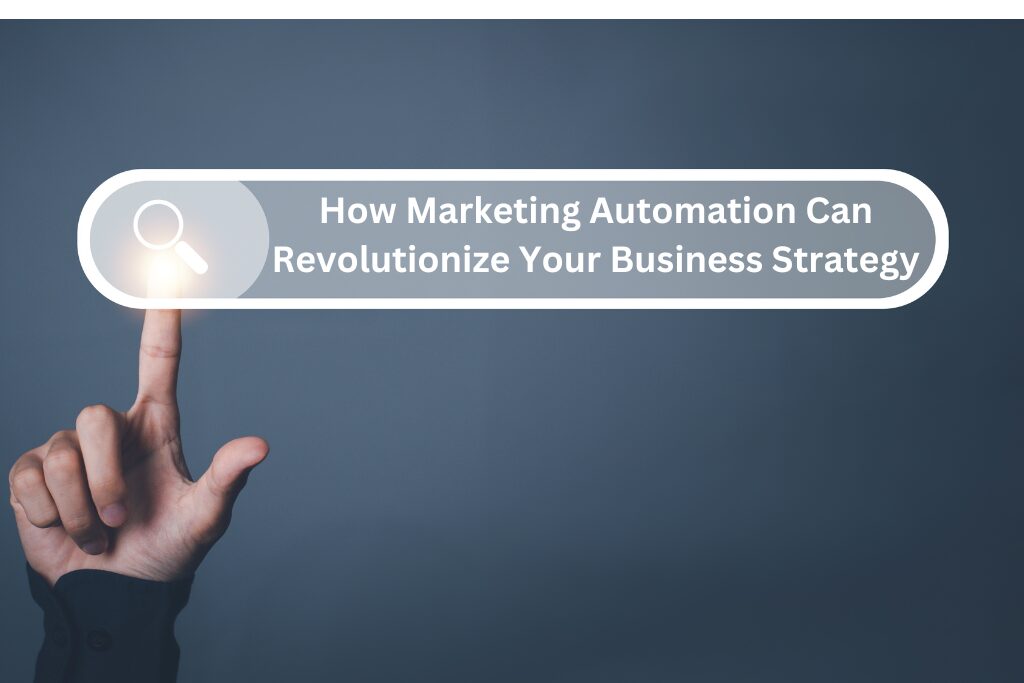Efficiency is a critical success factor in today’s competitive business environment, particularly for small businesses looking to establish a name for themselves. Profitability and sustainable growth are both fueled by the capacity to do more with fewer resources.
As we progress in the digital era, technology keeps changing how businesses operate by bringing in new ideas for increasing productivity and efficiency. Marketing automation is one such invention you should start using immediately. This cutting-edge technology will be widely used in business starting today, completely changing the way that organizations approach their customers.
What is Marketing Automation?
The way companies approach their marketing strategy has been completely transformed by the innovative technology known as marketing automation. Essentially, marketing automation is the use of technology and software to automate repetitive marketing operations.
Marketing automation makes it possible for companies to scale their operations effectively by optimizing all of these processes. Businesses can save time and money on promotional efforts by automating processes like client segmentation, email campaigns, and lead nurturing. For instance, it will take a significant amount of energy and time to send bulk emails to a particular audience segment automatically at a specific time, depending on their behavior or interests. Marketing automation can help with that.
Businesses may simply automate their marketing activities and concentrate on other crucial areas of their operations, including product development and customer support if they have the correct software and strategies in place. In case you are unfamiliar with this idea, proficient Slick digital marketers can assist you in accomplishing your objectives.
The Most Effective Marketing Automation Techniques to Increase Productivity
Strategies for an ideal marketing automation service might differ based on the goals, sizes, and kinds of businesses, and while some may find that executing a few methods is sufficient to get greater results, others may require all of the tools and tactics available in marketing automation. Now let’s talk about the most effective ones.
Lead Nurturing
Every good marketing approach must include lead nurturing campaigns. When a potential consumer is ready to make a purchase, it involves developing a relationship with them over the entire buyer’s journey. You can obtain a large number of high-quality leads if you are effective at lead generation. Turning leads into paying clients is essential to expanding your organization. Lead nurturing becomes an indispensable tool in your toolbox at this point and at any stage of your business plan.
Through the development of solid relationships, lead nurturing enables you to better understand your clients, increase revenue more quickly, and establish a positive brand image. Once a lead enters your funnel, your work with them is not over. Nurturing those leads fuels conversion rates and observable outcomes. To convince a potential customer to buy from you, lead nurturing entails developing a more personal connection with them. Increase the number of leads that become sales by using effective lead nurturing strategies to help your leads get through the sales funnel more quickly. Providing value to leads, maintaining contact with future customers at various points of their buyer journey, and maintaining alignment between your sales and marketing departments are all essential to maximizing their potential.
Automated Segmentation
Clients expect gentler and more significant interactions from businesses they trade with, regardless of the industry. Clients who receive individualized experiences from businesses are 80% more likely to make a partnership. Meeting this demand as a digital marketer means having the appropriate content available to the right people at the right time. More qualified leads, more sales, and more enduring client relationships are the outcomes of getting this combo correctly.
You can create distinct content for your audience based on a variety of metrics, demographics, habits, and other factors using automated segmentation. It allows you to convey communications that are specifically tailored to each group and are therefore more likely to be understood. New technologies enable you to automatically categorize your contacts into lists or tags, which simplifies the process of reaching out to your audience with more relevant messages.
Drip Campaigns
Sending periodic automatic emails to your subscribers is known as drip email marketing. Rather than distributing all of the material in a single direct mail campaign, these efforts are made to nurture potential clients by disseminating information in small doses over the course of several emails and within a timeframe of a few weeks.
Drip campaigns engage new leads in an ongoing conversation by gradually distributing content and marketing messages over time. You may create automatic email sequences that will be sent to a certain audience over time using the correct tool. Certain actions, such as downloading a lead magnet, visiting a website, leaving an abandoned cart, etc., will cause different emails to be sent in response to the user’s actions. To guarantee the best possibility of conversion, the remaining emails in the series will be sent in accordance with the initial one.
Follow-Up Emails
Rarely do even the finest cold email campaigns receive reply rates of more than 40%. Follow-up emails are an effective way to connect with the remaining 60% of prospects. Email follow-ups are an excellent way to keep consumers engaged or to remind them of a service or product they may have expressed interest in in the past. You can maintain brand awareness and boost customer interaction with relevant follow-up emails. Nevertheless, manually following up with a large database is nearly impossible, which is why you need to utilize automated follow-up email marketing tactics.
Conclusion
Today’s fiercely competitive business climate has made marketing automation more of a need than a luxury. It increases efficiency, saves time, and organizes marketing efforts. In the end, marketing automation increases revenue and improves consumer interaction, making it a vital tool for companies trying to prosper in the current digital era. In addition, companies may optimize their efforts for improved performance and return on investment by gathering and evaluating data, which provides them with insightful knowledge about consumer behavior and the efficacy of their campaigns. Therefore, marketing automation tactics are the best option if you want to expand your company.






